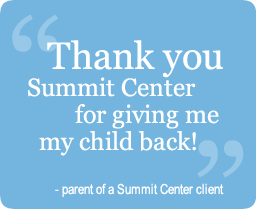If you can’t see, or if you can’t hear, you will have trouble learning. As obvious as that seems, the fact is that problems with seeing and hearing are NOT obvious. Many children have seeing and hearing difficulty and we don’t know it. We aren’t born with mature seeing and hearing. Our brains develop for these – except when they don’t.
Children are commonly farsighted, and the ability to focus and track across a line of text and jump efficiently to the beginning of the next line is a skill that has to be developed. But what if focus and tracking don’t develop in time for school? Eyes must be the right shape to allow focus, and eye muscles must be coordinated to work together efficiently. But that’s just the beginning, because after images are focused on the retina in the back of the eye there are complex brain pathways and processes that allow actually seeing and understanding what that image means. Both eye mechanics and visual brain processing are involved. Many glitches are possible. Early focusing problems certainly interfere with the development of efficient brain processing.
Learning in school depends on lots of reading. Reading depends on both seeing and hearing. Letters stand for the sounds in words. If you can’t see the letters, you can’t link them to the sounds. So vision problems can definitely interfere with reading! A typical vision screening will not reveal everything you need to know about a child’s focusing, coordinated tracking, and visual processing. Symptoms that suggest vision issues include lack of interest in reading, fatigue when reading, rubbing eyes, or covering one eye (see my Vision Symptoms Checklist). We have worked with dyslexic children whose dyslexia could not be easily remedied because they were literally seeing double, with letters or words sometimes seem as reversed. Routine vision exams did not detect all these problems and these children thought their vision was normal (don’t you assume that everybody sees what you see?). Once problems were remedied by vision therapy, our work on reading remediation became much easier, our clients progressed more rapidly, and they were certainly happier.
Hearing is equally important, and parallel processes are involved. The mechanics of our ears must work well to allow hearing, and just as with eyes, there are several mechanical steps before the nerve impulses leave the ears for the brain. And just as with seeing, there are brain pathways and processes involved with hearing. Mature hearing also develops over time. Just as young children can’t see like adults, young children cannot hear like adults. Ear infections, allergies, and other problems can interfere with early hearing, and these can interfere with the development of auditory processing. Even if you can see the words, if you can’t hear the separate sounds that make them up, you will have difficulty reading and spelling. Symptoms of hearing issues include difficulty following instructions, difficulty hearing in noisy situations, bad spelling, slow or inaccurate reading, and repeated “what?” questions. Routine hearing screening may not detect the inability to discriminate rapid changes in sounds necessary for understanding speech or for accurately hearing sounds in words. Some bright children we work with do not hear the difference between “f” and “th” or letter blends in words so that words like “small” will be spelled “sall,” “glad” as “gad.” Our standard educational therapy techniques may not be the best remediation – hearing therapy may be needed first.
What do we do if we suspect vision or hearing problems? Sometimes neuropsychological assessments indicate problems. Also, slow response to educational therapy prompts us to consider these issues. We may ask for more thorough vision and hearing assessments: for vision, binocular focusing and tracking analysis by a developmental optometrist; for hearing, a thorough screening by a pediatric audiologist. If problems are found, remediation is necessary, and the sooner the better, because delayed seeing and hearing means delayed learning and all the academic, emotional, and social problems that can go along with delayed learning. At Summit Center, we recommend vision therapy and/or hearing therapy when needed, and can provide specific references to clinics that have successfully treated our clients*. Our educational and psychological therapy moves forward more easily if basic processing improves.
Sometimes we focus so much on brains as the place where learning occurs that we forget that brains only work in bodies. Optimum learning requires healthy bodies! Effective, efficient seeing and hearing are basic and necessary for good health and optimum learning.
* NOTE: Summit Center is now a provider for one tool that may help some children; Fast Forward, a research-supported computer-based training program for processing, attention, sequencing and memory issues. Currently, I am using Fast ForWord with a client who does not hear the separate sounds in words to help him develop better sound processing. There may be associated benefits!
Dr. Nancy Knop offers educational therapy to Summit Center clients in Walnut Creek and in San Francisco. She assists students whose learning challenges at school are not resolving, by filling in gaps in background, understanding, and learning strategies in order to develop independent learners. Previously, Dr. Knop taught science at Head Royce School. Dr. Knop recently became a trained provider for Fast ForWord, a computer-based, research-supported program developed to help children with processing, attention, sequencing and memory issues. Learn more about Dr. Knop here.


